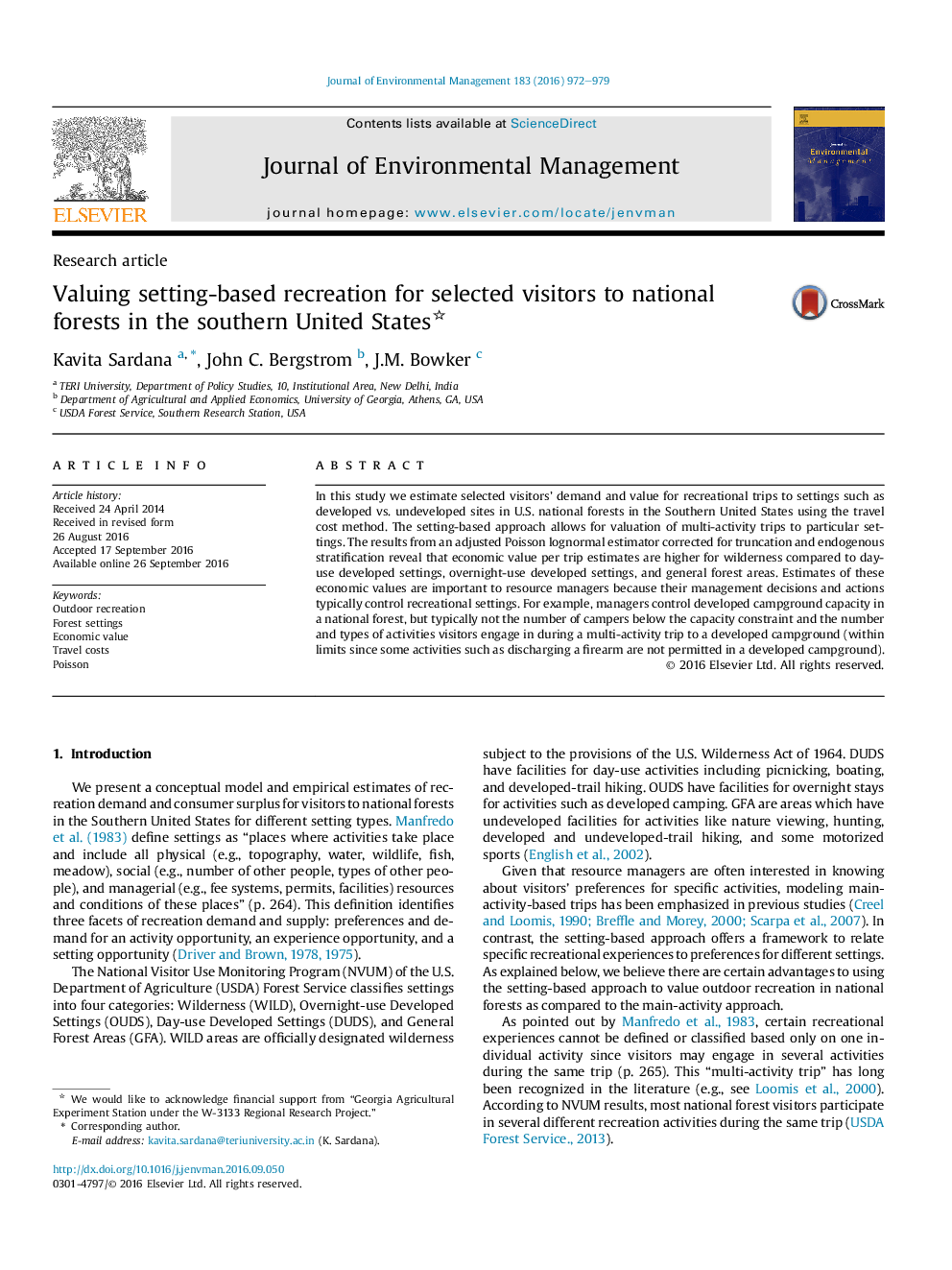| Article ID | Journal | Published Year | Pages | File Type |
|---|---|---|---|---|
| 5117235 | Journal of Environmental Management | 2016 | 8 Pages |
Abstract
In this study we estimate selected visitors' demand and value for recreational trips to settings such as developed vs. undeveloped sites in U.S. national forests in the Southern United States using the travel cost method. The setting-based approach allows for valuation of multi-activity trips to particular settings. The results from an adjusted Poisson lognormal estimator corrected for truncation and endogenous stratification reveal that economic value per trip estimates are higher for wilderness compared to day-use developed settings, overnight-use developed settings, and general forest areas. Estimates of these economic values are important to resource managers because their management decisions and actions typically control recreational settings. For example, managers control developed campground capacity in a national forest, but typically not the number of campers below the capacity constraint and the number and types of activities visitors engage in during a multi-activity trip to a developed campground (within limits since some activities such as discharging a firearm are not permitted in a developed campground).
Related Topics
Physical Sciences and Engineering
Energy
Renewable Energy, Sustainability and the Environment
Authors
Kavita Sardana, John C. Bergstrom, J.M. Bowker,
